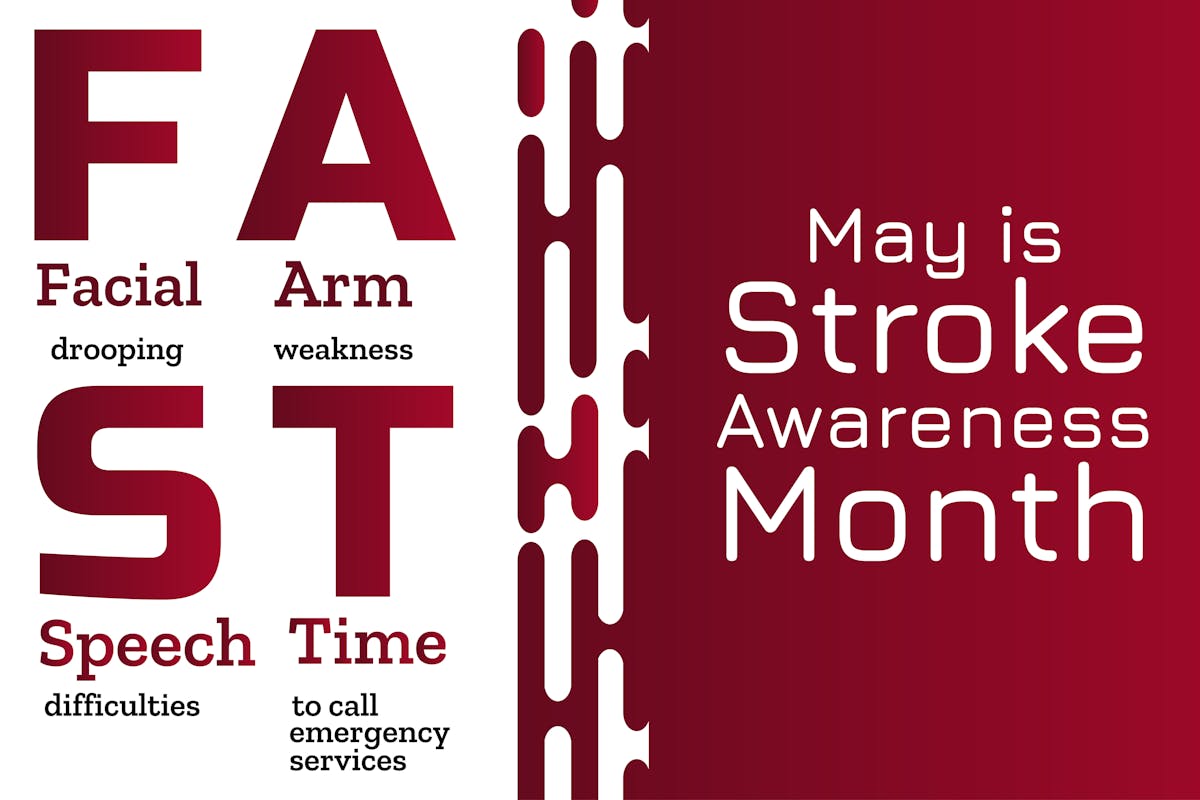What Everyone Should Know About Strokes

When a person is experiencing a stroke, it is frightening for them and everyone around them. Strokes can occur without warning and are a leading cause of disability and death among seniors in the United States. That’s why every second counts when it comes to getting treatment for someone who is having a stroke.
In honor of National Stroke Awareness Month in May, we are helping to shine a spotlight on this condition. Here are some of the statistics on strokes:
- Stroke is the fourth-leading cause of death in this country.
- Someone experiences a stroke every 40 seconds in the U.S.
- Almost 800,000 Americans a year have a stroke.
According to the American Stroke Association, a stroke is the result of brain cells being deprived of oxygen. Oxygen deprivation is typically caused by a blood clot or by a blood vessel bursting. As brain cells are deprived of oxygen, the cells begin to die. The longer the brain is deprived of oxygen, the less likely it is that the person will survive or make a full recovery.
What Causes a Stroke?
The risk factors for a stroke can be broken down into three general categories: lifestyle, medical, and genetic. Here’s a little more information on each of these.
- Lifestyle choices that impact stroke risk
A diet consisting primarily of sugar and saturated fats increases your stroke risk, as does consuming too much sodium. Smoking and heavy alcohol consumption are other lifestyle choices that put you at higher risk. Experts also say being too sedentary raises your odds of having a stroke—in fact, it can be nearly as dangerous as smoking. You may be able to lower your risk by exercising regularly and avoiding sitting for long periods of time.
- Health issues that increase your risk for stroke
Some medical conditions can put you at higher risk of stroke. A few of the more common include high blood pressure, diabetes, high cholesterol, coronary artery disease, atrial fibrillation, and problems with circulation. If you or a senior loved one have any of these, it’s important to talk to your physician to see what steps you can do to lower your risk.
- Genetic risk factors for strokes
Hereditary factors can also increase the odds of a stroke. Two of these are race and ethnicity. African Americans, Hispanics, and Asians/Pacific Islanders are all at higher risk for experiencing a stroke than Caucasians.
Act FAST: An Acronym for Stroke Symptoms
It’s important for older adults and their caregivers to learn how to recognize the signs and symptoms of a stroke. Remembering the acronym FAST might help you do that:
- F is for Face: Drooping on one side of the face is a classic stroke symptom. It might be accompanied by blurry vision, loss of vision, numbness, or drooling.
- A is for Arm: Weakness in an arm is another warning sign. Ask the person to raise both arms above their head. If they have difficulty doing so or if one arm drifts downward, they might be experiencing a stroke.
- S is for Speech: Slurred speech, difficulty forming words, and repetitive speech can be signs of an oncoming stroke.
- T is for Time: If a stroke is suspected, look at the clock and note the time. Some life-saving medications are time-bound and can only be administered within a certain time frame after symptoms first appear.
Other common symptoms can include confusion, difficulty walking, and sudden onset of a painful headache. We hope you will save this information and share it with the older adults and caregivers in your life.
Consider an Emergency Response Device
Experiencing a stroke can put you at higher risk for having another. Researchers say 23% of people who have a stroke will experience a second one. Being able to quickly and easily summon help is vital. One way to do that is by investing in an emergency response device like the Life Protect 24/7 mobile monitoring unit. Call 1-844-203-5617 to learn more today!